Located in southern Poland atop a vast salt deposit lies the historic Wieliczka Salt Mine, a pivotal industrial site in Europe’s past. Its extensive network of tunnels spans 287 kilometers, yet visitors can only explore just 3.5 kilometers. With over two thousand chambers concealed within, only a select few are accessible to the public. To take this underground adventure, one must partake in a guided tour – and that’s precisely what we did.
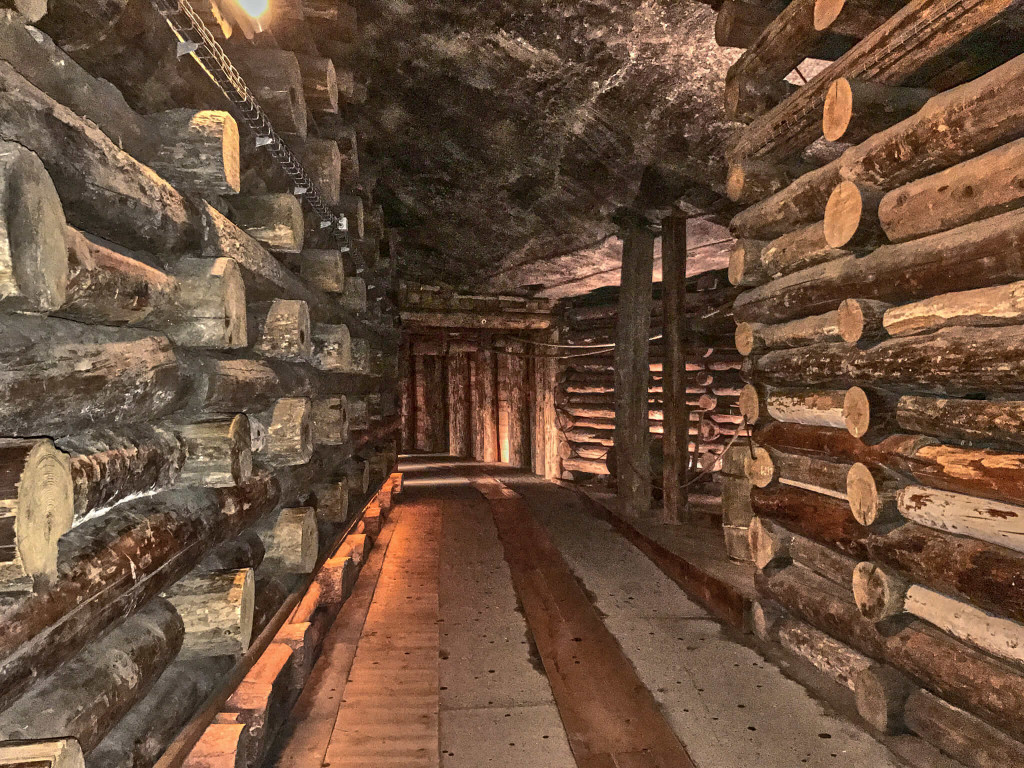
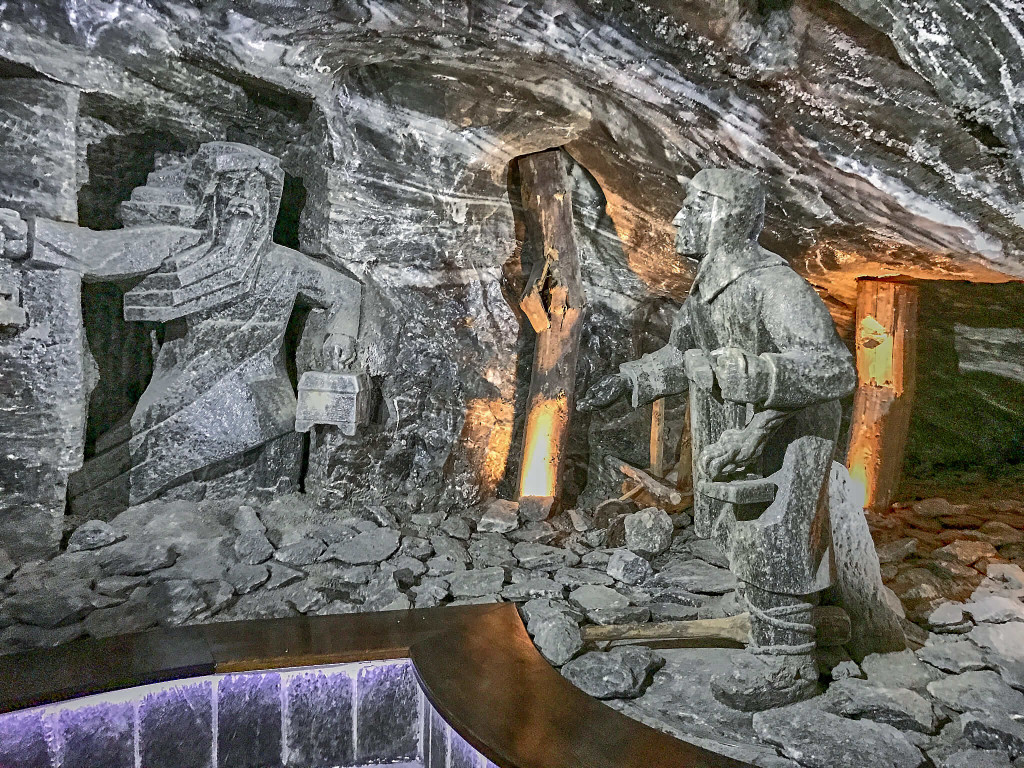
The tourist route of the Wieliczka Salt Mine Tour
Guided tours were offered in various languages, and ours was conducted in English. Equipped with headphones and small receivers, we started our subterranean adventure. Throughout the excursion, our guide told us with tales of mining history and its secrets. Given that our tourist route covered just 1% of the underground expanse, visitors were cautioned to stick with the group and refrain from wandering into restricted areas.
Our underground journey began with a descent of 350 steps, leading us into the depths of the mine. Fortunately, we could ascend back to the surface using elevators at the end of our tour.
Sites on the tourist route
Our tour group followed the designated tourist route within the Wieliczka Salt Mine. Before starting our circular walk, our tour guide provided a brief introduction to the mine. Subsequently, we ventured into the following chambers.
- Salt Statue in Copernicus Chamber
- The life-sized salt statues in the Janowice Chamber
- St. Kinga’s Chapel, the world’s largest underground church
- The recreation of dangerous mine jobs in the Spalone Chamber
- Authentic transport devices in the Sielec Chamber
- An underground saline lake
- The massive support system in the Michalowice Chamber
- Illumination inside the Józef Piłsudski Chamber
- The UNESCO marker in the Stanislaw Staszic Chamber
- Restaurant, Museum, and Ballroom chambers
- Interactive multimedia in the 5D cinema
Salt Statue in Copernicus Chamber
Our journey gegan with the Copernicus Chamber, where a salt statue commemorated the renowned scientist who once explored the Wieliczka mine. Notably, luminaries like Goethe and Pilsudski also graced these underground halls, their statues standing as testaments to their visits.
The life-sized salt statues in Janowice Chamber
Here, within the Wieliczka Salt Mine, life-sized salt statues vividly portrayed one of its oldest legends. According to folklore, when the Hungarian Princess Kinga wed, she received a salt mine in the Marmaros region as part of her dowry.
Legend has it that she cast her engagement ring into the depths of the mine, and miraculously, along with salt deposits, it found its way to Wieliczka. Upon discovery, Kinga ordered excavation at that precise spot, and her ring was found within the very first block of salt. Since that fateful day, salt has flowed plentifully throughout Poland, thanks to Princess Kinga’s mystical gift.
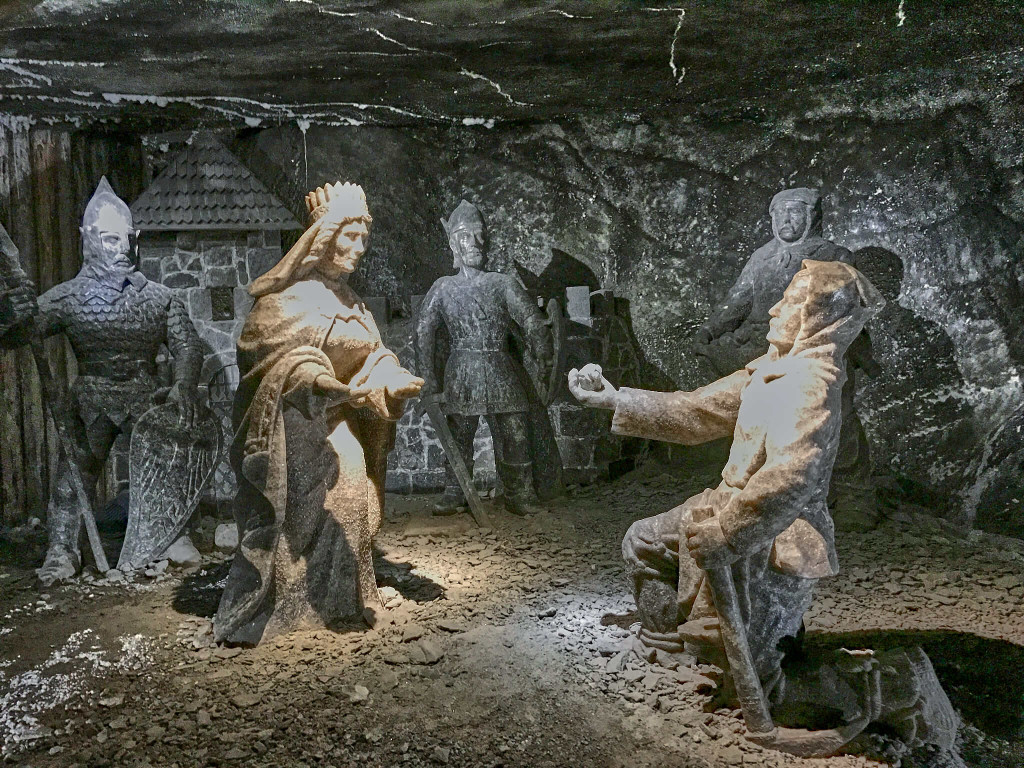
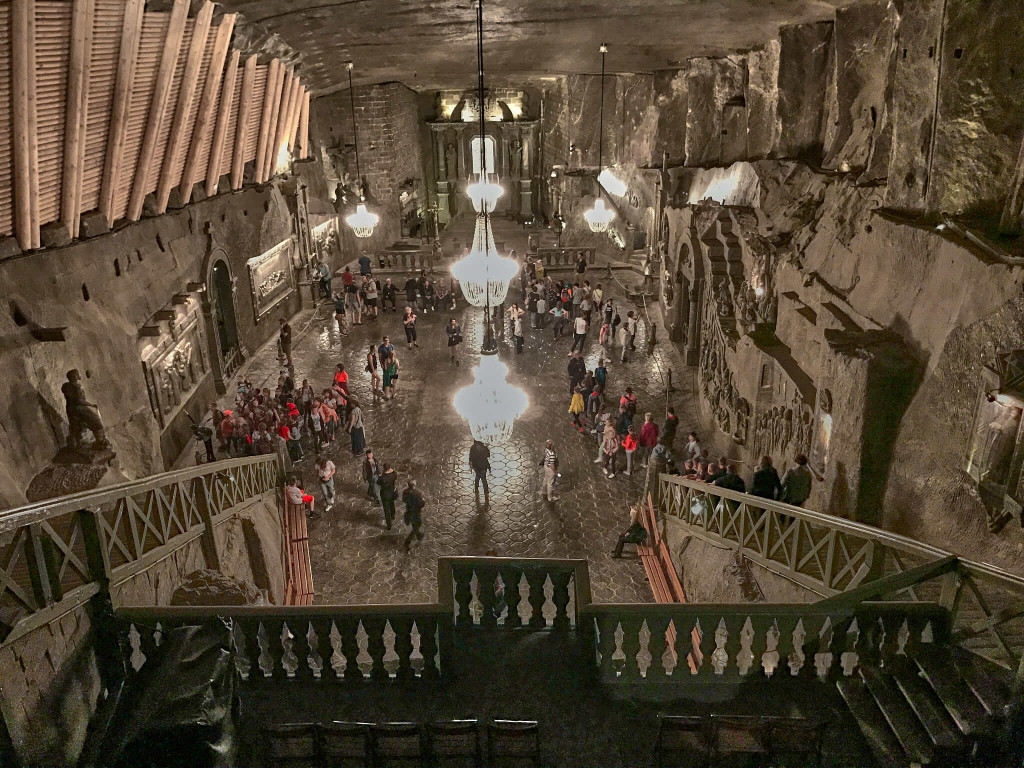
St. Kinga’s Chapel, the world’s biggest underground church
In a fascinating twist, the fairytale of St. Kinga was inspired by a real figure, a Hungarian Princess. To honour her memory as the patron saint of salt mine workers, this chapel was constructed.
Made exclusively of rock salt, at 101-meter deep in the Wieliczka Salt Mine, St. Kinga’s Chapel has become the world’s biggest underground church. The cavernous space is illuminated by chandeliers fashioned from salt crystals.
The chapel has marvelous acoustics. It features bas-relief carvings depicting scenes from the New Testament, painstakingly crafted by miners. Besides, there are many religious figures sculpted on the walls of the chapel. In my view, it is somewhat a ballroom rather than a conventional chapel.
The recreation of dangerous mine jobs in the Spalone Chamber
The chamber authentically recreated dangerous mine jobs. Centuries ago, methane explosions posed significant hazards. Seasoned miners, known as the Penitents, clad in damp attire and wielding torches on extended poles, cautiously crawled on the floor, successfully dispelling the otherwise imperceptible gas pooling beneath the chamber’s ceiling.
Authentic transport devices in Sielec Chamber
In ancient times, miners and animals shouldered the workload, as machinery was scarce. Amidst dim surroundings it was illuminated solely by torchlight. Within the Sielec Chamber, we could see contraptions employed to convey salt through subterranean passageways.
Miners relied on wooden carts, known as Hungarian dogs, crates, and custom sledges for their tasks. Salt was packed in barrels or barrel-shaped rolls, with horses aiding in its transport to the surface.
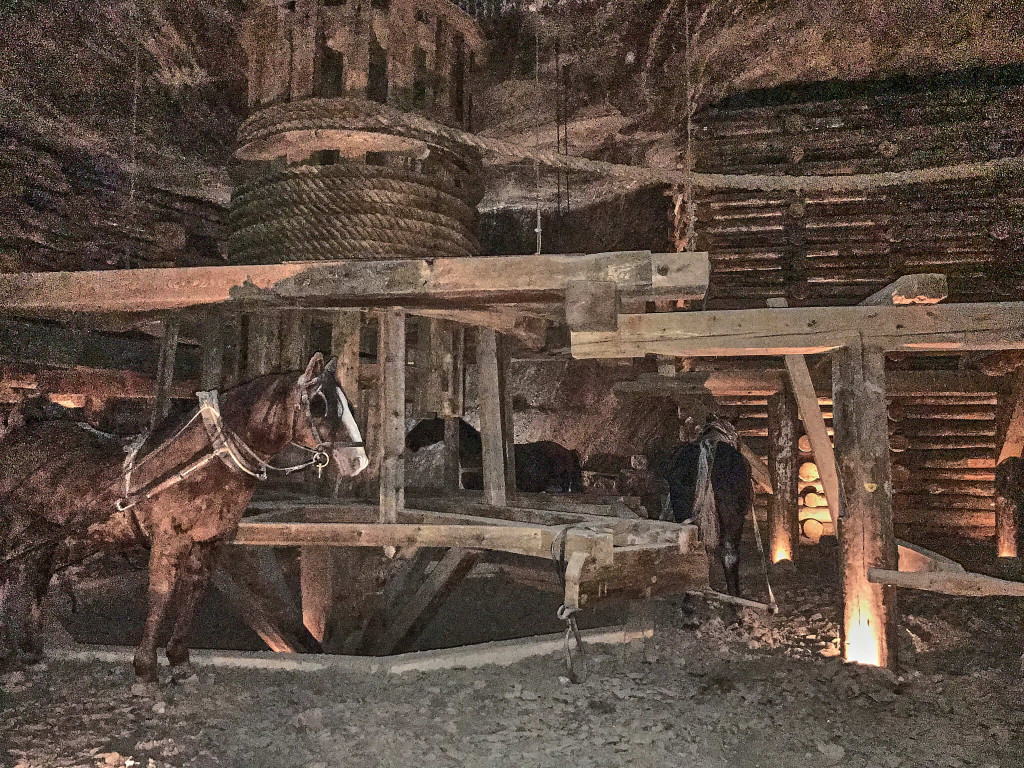
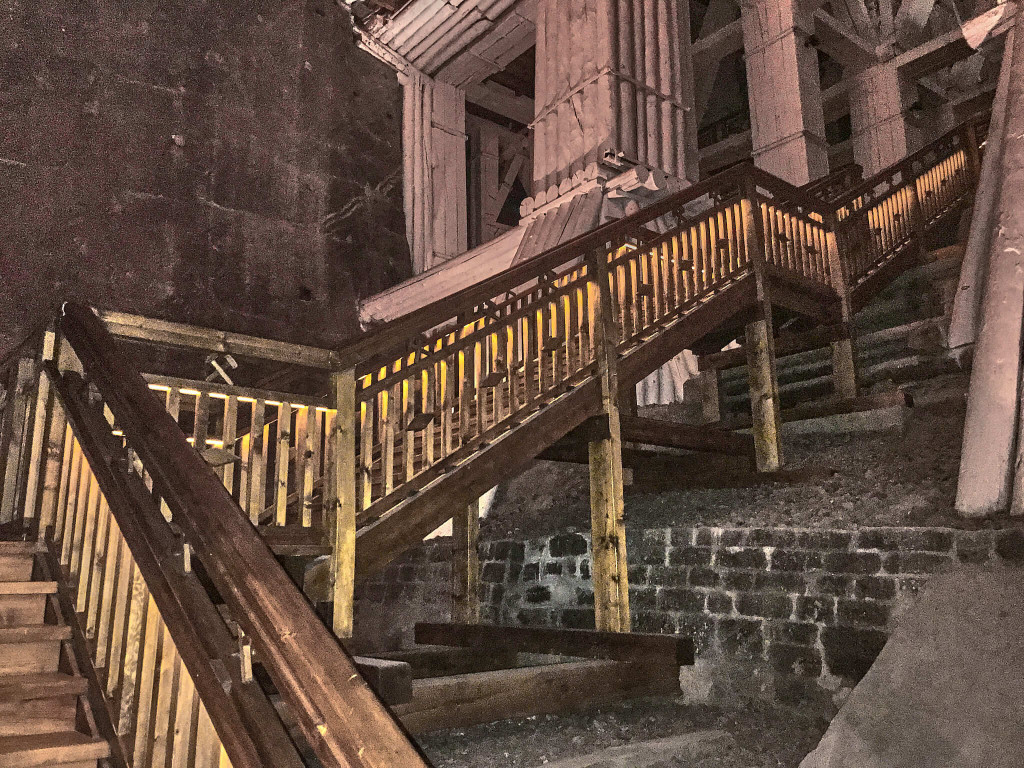
An underground saline lake
As we journeyed along the path, we ventured through a narrow shaft, eventually leading to a wondrous saline lake. Enveloped by darkness, my mind conjured scenes reminiscent of a fantasy film. The lake host an astounding salt concentration of over 300 grams per litre, rendering it impervious to further salt dissolution. Despite the twilight of the chamber, the lake emitted a serene blue glow, leaving me to ponder whether its beauty was entirely natural.
The massive support system in the Michalowice Chamber
The chamber has an incredibly lofty ceiling. Here the wooden mine support system is impressive. It would prevent the collapse of the cell. The remarkable timber constructions, such as the cluster pillars found in the Michalowice Chamber, are absolutely the testaments to the carpenter’s masterpieces.
The illumination inside the Józef Piłsudski Chamber
It also has wooden supports painted in white, much like the Michalowice chamber’s support. Additionally, it houses a pool of water and a tunnel that links to another room. The illumination of the wooden stairs creates a stunning and mysterious ambiance.
UNESCO marker in the Stanislaw Staszic Chamber
The Stanislaw Staszic Chamber, accessible to visitors, is the largest among all. I spotted a large UNESCO marker displaying the first 12 UNESCO sites, including the Wieliczka Salt Mine.
After our guided tour ended, which lasted two hours, I observed a souvenir shop offering salt crystal products. There were also seating areas for visitors to relax, along with accessible toilets.
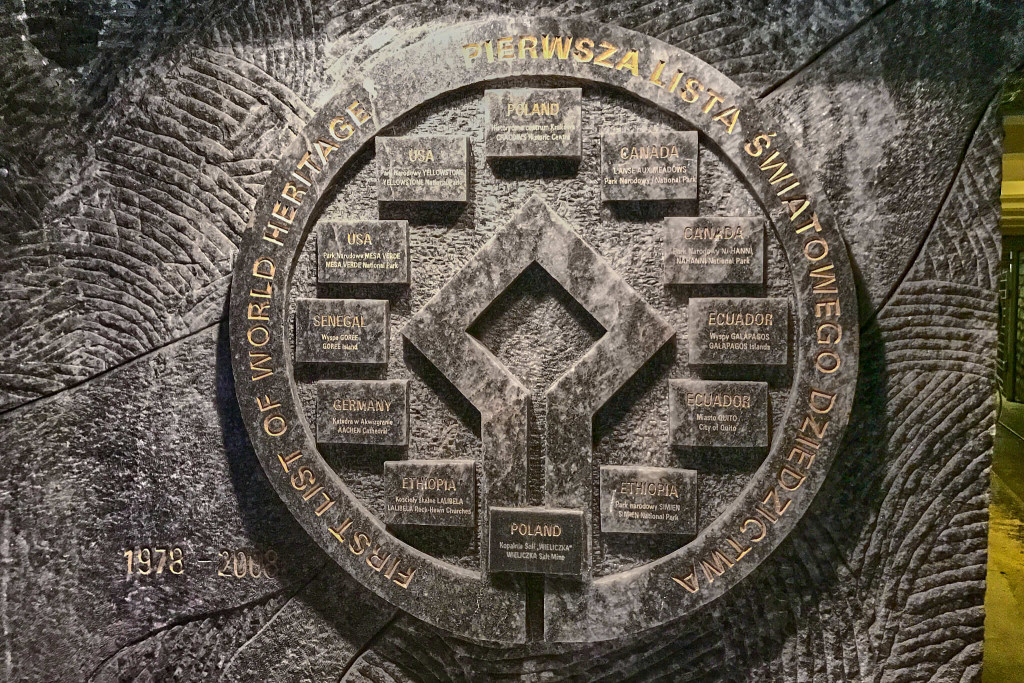
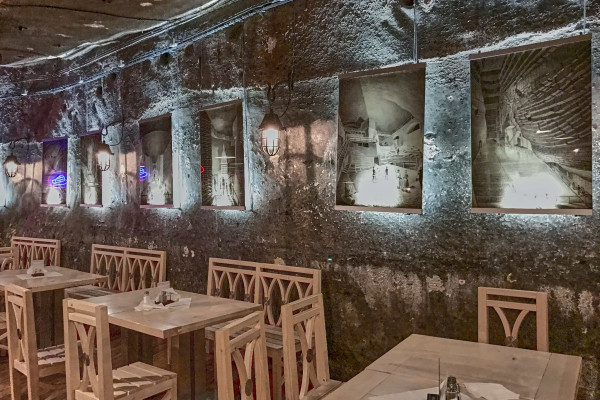
Restaurant, Museum and Ballroom chambers
We proceeded down a pathway to the underground restaurant, where they prepared and served fresh meals. The seating area had a modern vibe. An exit with a high-speed elevator awaited to take us back up to the surface.
However, the tour doesn’t end at the restaurant. For those still up for it, you can extend your journey to the Krakow Salt Works Museum, included in the price.
The interactive multimedia stands in 5D cinema
Thanks to EU co-financing in April 2014, the Wieliczka Salt Mine opened two new chambers, 125 meters deep. In these new areas, we could watch a film in the 5D cinema and engage with over 20 interactive multimedia stands, games, and applications. It’s also an educational hub for kids, with the exhibition focusing on salt from multiple perspectives and applications.
Tips for visiting the Wieliczka Salt Mine
Two tours in one day
If your budget permits, you can opt for a combined tour of Auschwitz and the Wieliczka Salt Mine in a single day.
What to wear
We visited the mine in May when the temperature is regularly around 15 degrees Celsius. It’s advisable to bring a warm jacket along for the visit. Additionally, the tour operator suggests wearing comfortable shoes.
How to get to Wieliczka Salt Mine
The Wieliczka Salt Mine is located 16 kilometers southeast of Krakow. You can reach it by bus, train, or car. For detailed information, check here.
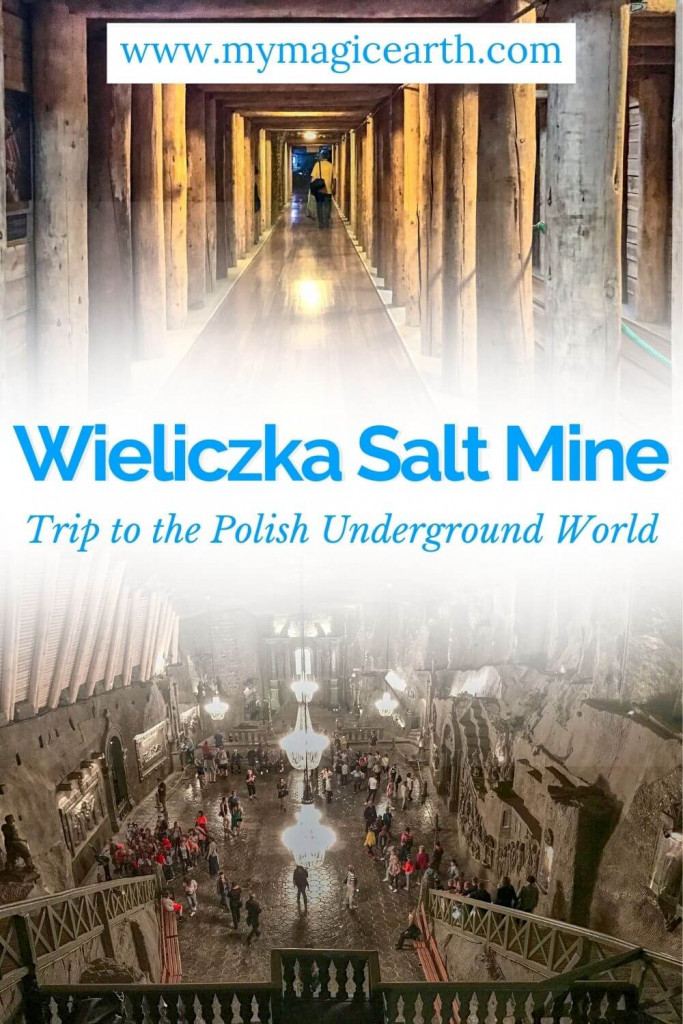
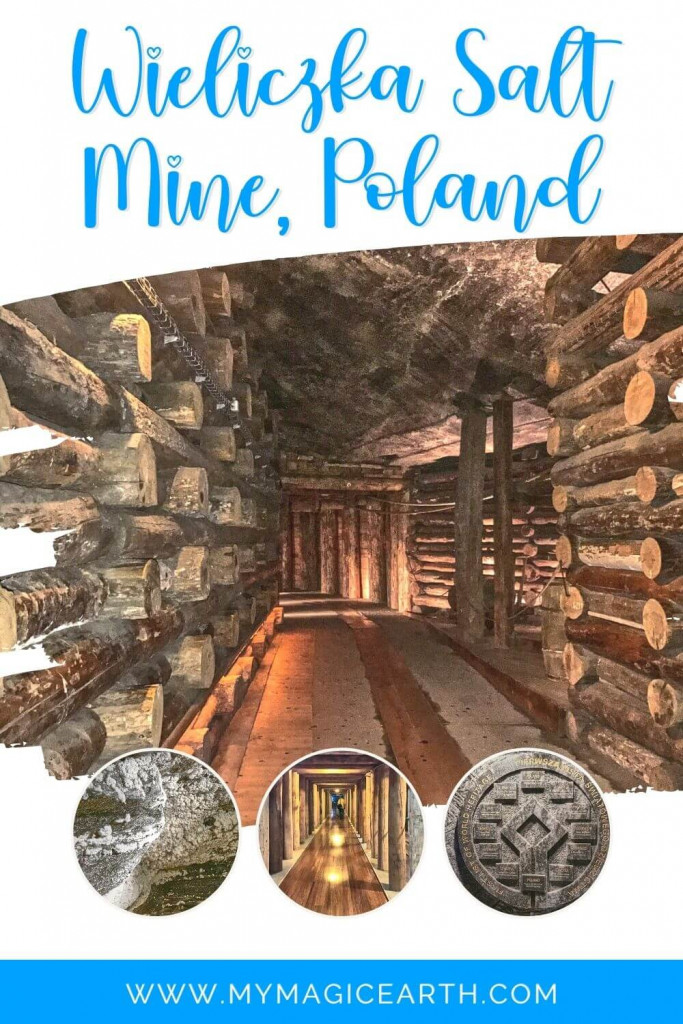
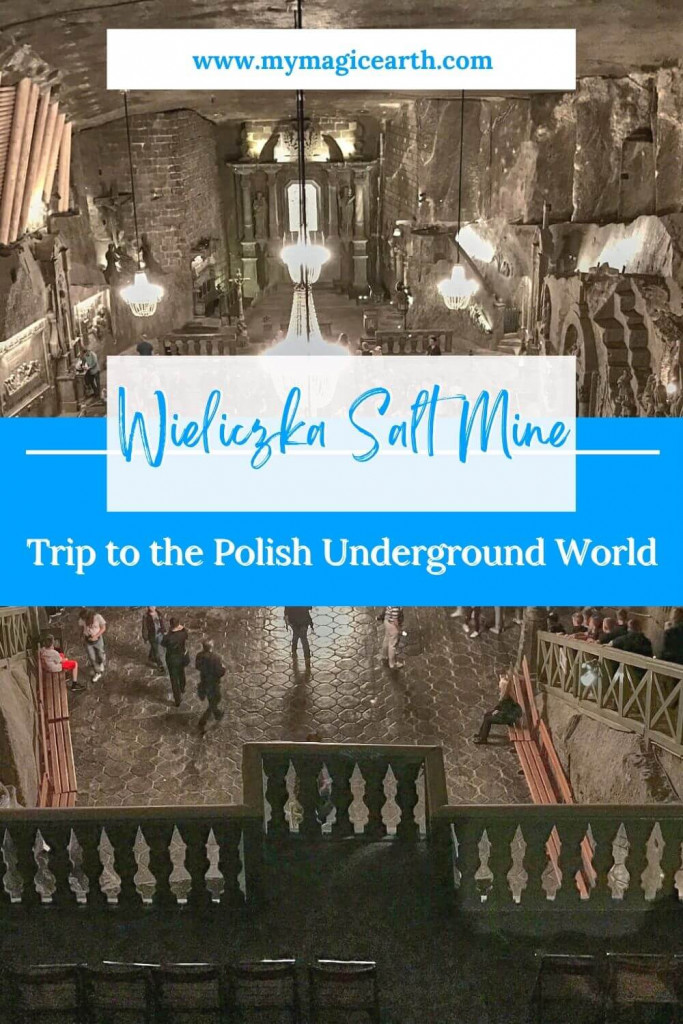

The saline lake seems so magical. I never knew that this existed. I would love to visit and take this tour.
This is absolutely beautiful! You always share the most amazing destinations on here!
Whoa that would be crazy! I have always wondered what goes on in those things!
That would be such a fun trip. I love marveling at geology; it is truly amazing!
Oh wow. This is so cool. I can’t believe you can have all those beautiful chambers below ground. The St. Kinga’s chapel and its chandeliers are fantastic!
Omg that’s amazing, sounds like an adventure I would love to go on. Being able to explore the Salt Mine would be so cool.
How awesome is this? I appreciate the tips for what to wear. The mine would definitely top my list of places to visit in Poland.
This is so cool! I feel like I’m seeing something out of an action movie. If I were to go to Poland I’d love to visit Krakow and the salt mine.
Amazing photos! The Janowice Chamber really made me so curious! I wish I can visit soon.
Wow! St- Kinga’s Chapel looks amazing. I’ve added this to my wish list. Thank you for sharing.
This is so cool! Almost like something out of Indiana Jones 🙂 I’m hoping to visit Krakow next year and will definitely be going to the salt mine.
Thanks Helen. Share us your experience as well when you are there.